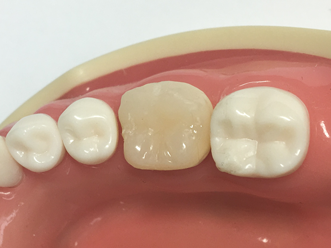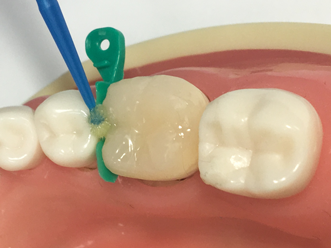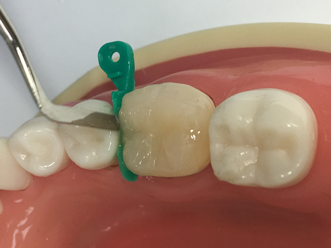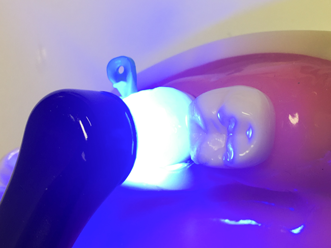In this series of blog posts we will be addressing some of the most frequently asked questions surrounding the One Visit Crown (OVC). Nothing in dentistry is easy, but we hope that some of these tips and tricks will help you to continue to provide great clinical outcomes for your patients.
Firstly, make sure that you have read our articles on how to achieve tight contacts:
- How to get tight contacts using the Garrison Composi-Tight Original Ring
- How to get consistently tight contacts with the OVC
If you familiarise yourself well with the above methods to get tight contacts, then ideally you should not end up with an open contact at all. However, on the odd chance that it does occur, below we will outline what to do in order to recover.
What do you do if after the OVC procedure, you end up with a poor contact?
First of all – ask yourself: is the poor contact large enough to inject flowable?
If the answer is no: use a high speed hand-piece to do a saucer prep on the proximal surface to open the gap.
If the answer is yes: there are two methods that we recommend. See below.
| Method 1 | Method 2 | |
| Advantages | Quick, guaranteed tight contact. | Better contours, bonding agent doesn’t contact neighbouring tooth. |
| Disadvantages | Neighbouring tooth’s proximal contact will get coated with bonding agent. | More steps, need right equipment, harder to cure to full depth. |
Method 1: Place OVC Wedge, dry, apply bonding agent, dry, then inject flowable resin as deep as possible and manipulate with a fine instrument to ensure bubbles are released. Add more flowable or regular composite incrementally and then fully cure from all directions.
Note: Do not use self etching bonding agents. Bonding agent will go onto the neighbouring proximal contact. Non self-etching bonding agents do not bond well to unetched enamel and can be prised apart with a flat plastic. This will enable flossing.
| A. Completed OVC with open contact. | B. Insert OVC Wedge and air dry. |
 |
 |
| C. Apply bonding agent and air dry. | D. Inject flowable resin as deep as possible and manipulate with a fine instrument to ensure bubbles are released. |
 |
 |
| E. Add more flowable or regular composite incrementally and then fully cure from all directions. | F. Finished OVC with good contacts. |
 |
 |
Method 2: Alternatively, you can recover using a sectional matrix system such as the Dentsply Sirona Palodent Plus or Triodent V3 System. If need be, you can open the contact a little further so that you have better access. The composite will bond very well with the OVC.
 |
 |
| A. Completed OVC with open contact. | B. Slide matrix band into the embrasure, wedge, and place the ring. |
 |
 |
| C. Apply bond and air dry, but do not cure. | D. Apply flowable, using an instrument to remove any air bubbles. |
 |
 |
| E. Apply more flowable, then fully light cure from different directions. | F. Remove separator ring and light cure. |
 |
|
| G. Finished OVC with good contacts. |
Which method do you prefer? Or do you have a different method? Leave your comments below.
